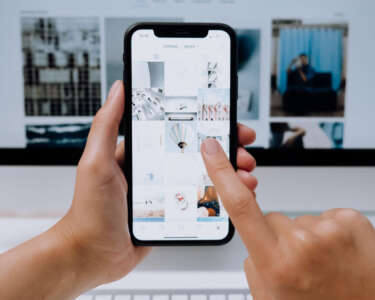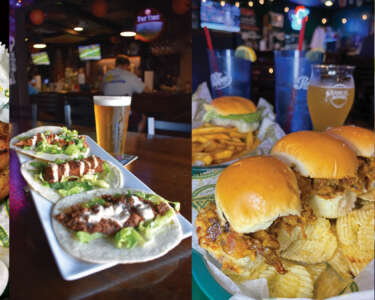There’s a reason the sports terms we hear at every game reference eyes and vision. Not much happens in sports without vision, and it’s no surprise that superior athletes have superior visual skills.
Visual skills go way beyond just seeing 20/20. Eyes are an extension of the brain. Not to get too scientific, but the eyes are the only neurosensory system in the body under our control. Gaining better control of how your eyes see and interpret information can affect your performance in any aspect of life, especially in sports.
When we’re born, our eyes and our brain learn to move and coordinate in tandem to see the world. Because vision and visual control are learned just like any other skill, they can be trained, strengthened and improved. The visual system is the most overlooked area of training in sports, although it is being recognized more and more for the impact it can have on elite performance.
Every play in every sport begins with visual information. We see something, process it and then decide on an action. Swing or don’t swing, shoot or pass, move left or right. How quickly, accurately and efficiently you go through that process is what separates different levels of athletes, from amateur to pro. You can have the best swing in the world but if your timing is off you won’t hit the ball. The eyes lead the action.
Some of the skills that can be trained through sports vision therapy include eye-hand coordination, visual tracking, peripheral awareness, object recognition, spatial awareness, near-far focusing and depth perception.
As an optometrist with a background in vision science and sports psychology, I have the knowledge and expertise to bring high-level sports vision training to our community. Professional athletes Steph Curry and Matt Ryan both started vision training in the off seasons before they broke out with MVP performances. MLB players have used vision training going back to the 1970’s. Even NFL teams are now screening potential draft picks based on a visual skills assessment.
It’s never too early or late to start a vision training program for sports. There are options for individual or group training as little as once a week. And when you see visual skills improve and corresponding athletic performance gains, you’ll wonder why it’s taken so long to focus on this crucial aspect of your game.
For more information, please visit miamisportsvision.com.














 Deering Estate
Deering Estate
 Massage Envy South Miami
Massage Envy South Miami
 Calla Blow Dry
Calla Blow Dry
 My Derma Clinic
My Derma Clinic
 Sushi Maki
Sushi Maki
 Sports Grill
Sports Grill
 The Healthy Kitchen
The Healthy Kitchen
 Golden Rule Seafood
Golden Rule Seafood
 Malanga Cuban Café
Malanga Cuban Café

 Kathleen Ballard
Kathleen Ballard
 Panter, Panter & Sampedro
Panter, Panter & Sampedro
 Vintage Liquors
Vintage Liquors
 The Dog from Ipanema
The Dog from Ipanema
 Rubinstein Family Chiropractic
Rubinstein Family Chiropractic
 Your Pet’s Best
Your Pet’s Best
 Indigo Republic
Indigo Republic




 ATR Luxury Homes
ATR Luxury Homes


 2112 Design Studio
2112 Design Studio
 Hamilton Fox & Company
Hamilton Fox & Company
 Creative Design Services
Creative Design Services
 Best Pest Professionals
Best Pest Professionals
 HD Tree Services
HD Tree Services
 Trinity Air Conditioning Company
Trinity Air Conditioning Company
 Cisca Construction & Development
Cisca Construction & Development
 Mosquito Joe
Mosquito Joe
 Cutler Bay Solar Solutions
Cutler Bay Solar Solutions


 Miami Royal Ballet & Dance
Miami Royal Ballet & Dance
 Christopher Columbus
Christopher Columbus
 Pineview Preschools
Pineview Preschools
 Westminster
Westminster
 Carrollton
Carrollton
 Lil’ Jungle
Lil’ Jungle
 Frost Science Museum
Frost Science Museum
 Palmer Trinity School
Palmer Trinity School
 South Florida Music
South Florida Music
 Pinecrest Orthodontics
Pinecrest Orthodontics
 Dr. Bob Pediatric Dentist
Dr. Bob Pediatric Dentist
 d.pediatrics
d.pediatrics
 South Miami Women’s Health
South Miami Women’s Health

 The Spot Barbershop
The Spot Barbershop
 My Derma Clinic
My Derma Clinic




 Miami Dance Project
Miami Dance Project

 Rubinstein Family Chiropractic
Rubinstein Family Chiropractic
 Indigo Republic
Indigo Republic

 Safes Universe
Safes Universe
 Vintage Liquors
Vintage Liquors
 Evenings Delight
Evenings Delight





 Atchana’s Homegrown Thai
Atchana’s Homegrown Thai
 Baptist Health South Florida
Baptist Health South Florida

 Laser Eye Center of Miami
Laser Eye Center of Miami
 Visiting Angels
Visiting Angels
 OpusCare of South Florida
OpusCare of South Florida

 Your Pet’s Best
Your Pet’s Best





 HD Tree Services
HD Tree Services
 Hamilton Fox & Company
Hamilton Fox & Company


 Creative Design Services
Creative Design Services